A bike spindle refers to one of three things:
- a bottom bracket spindle
- crank spindle or
- pedal spindle.
Although the term “bike spindle” is not used amongst industry insiders, I’ll treat it as though it is.
I’ll confine the discussion to bottom brackets and cranks, leaving out pedal spindles, and trace the key developments in design down to the present.
It’s a history, yes. But also a description of the present since most forms of BB and crank spindle that have appeared since Starley developed his safety bike, are available today in one form or another.
CONTENTS
- Axle or Spindle?—What’s the Difference?
- Three Types of Bottom Bracket Spindle – Wedges (2) and Splines (1)
- Integrated Crank Spindles – 24mm, 30mm, 28.99mm
Before we get into details, let’s firstly take note of the important distinction between axles and spindles.
‘AXLE’ or ‘SPINDLE’?
The definition of both axle and spindle is clearly contained in the words themselves even though
An axle is a stationary rod around which components rotate.
Think of an ‘axis’ as in the earth’s axis—the earth revolves around its axis which remains stationary at its center.
While the earth’s axis is an imaginary line, axles on bikes have a mass and diameter, although they also center on an imagined point.
Wheel axles are the most instantly recognizable axles on a bike.
They are fixed against the inner race of the wheel hub bearings on one side, and bolted or clamped into the dropout on the other.
The hub’s outer race attached to the spokes rotates around the ball bearings allowing the wheel to turn freely.
Wheel axles aside, then, bikes rely on spindles with the bottom bracket being the most important point of installation.
THREE TYPES OF BOTTOM BRACKET SPINDLE
Wedges have been an efficient means of connecting bike components over the years.
The wedge-bolt that is the cotter pin still does the job of fixing cranks to the spindle on a limited range of low end — or classic — bikes.
It has further evolved into the more sophisticated square-taper wedge but then disappeared when integrated cranks were introduced.
Hollowtech’s twin pinch bolts, or the alternative one bolt fixing a crank to an integrated spindle (eg. SRAM) did away with the wedge.
Cottered Spindle
Cottered bike spindles rotate on loose bearings housed in a classic cup and cone configuration.
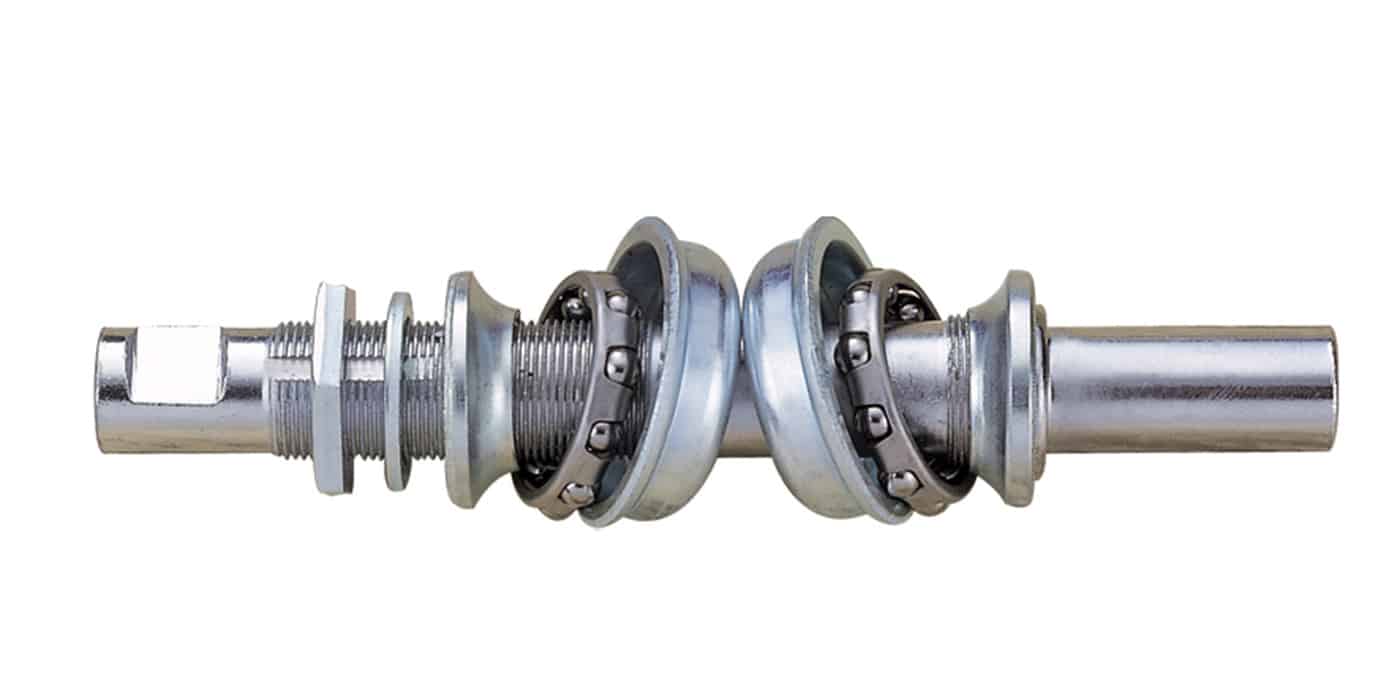
The crank is mounted onto the spindle. Then the cotter pin is installed through the hole machined into the crank that passes through the center of the spindle axis.
The flat, tapered edge of the pin anchors against the matching face on the spindle.
Tightening the cotter pin’s bolt forces the crank against the spindle.
As long as each bolt is tight, the crank on that side will be tight.
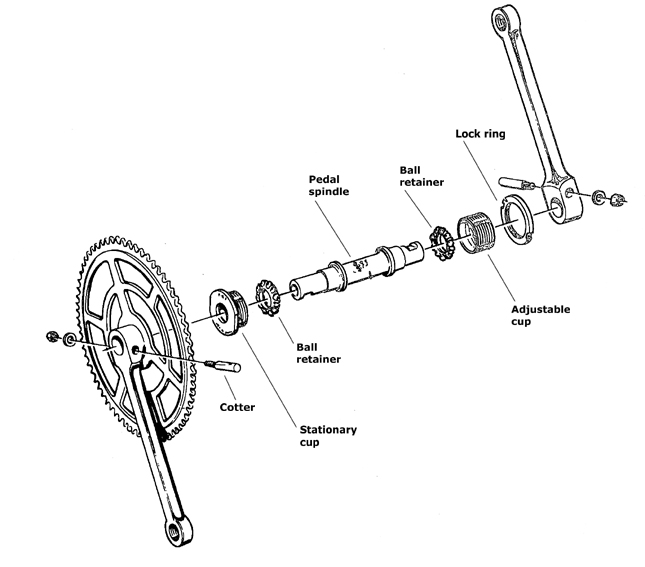
Note how each face on the spindle is 180 degrees to the other so the cranks are aligned on the same plane.
Cotter pins loosen and wear over time.
Keeping the bolt tight minimizes movement and thus wear; regular checking is highly advised.
Square Taper Spindles
Cotter pins do the job of keeping the cranks firmly secured to bike spindles…as long as the bolts are kept tight.
Although that is a small maintenance procedure easily take care of, cottered spindles are more complex — and heavier — than they need to be.
Cottered bike spindles were simplified by replacing the pin and nut with a bolt screwed into each end of the spindle.
A square taper bike spindle incorporates the cotter pin’s flat taper and spindle’s flattened edges into the spindle, eliminating the need for a bolt.
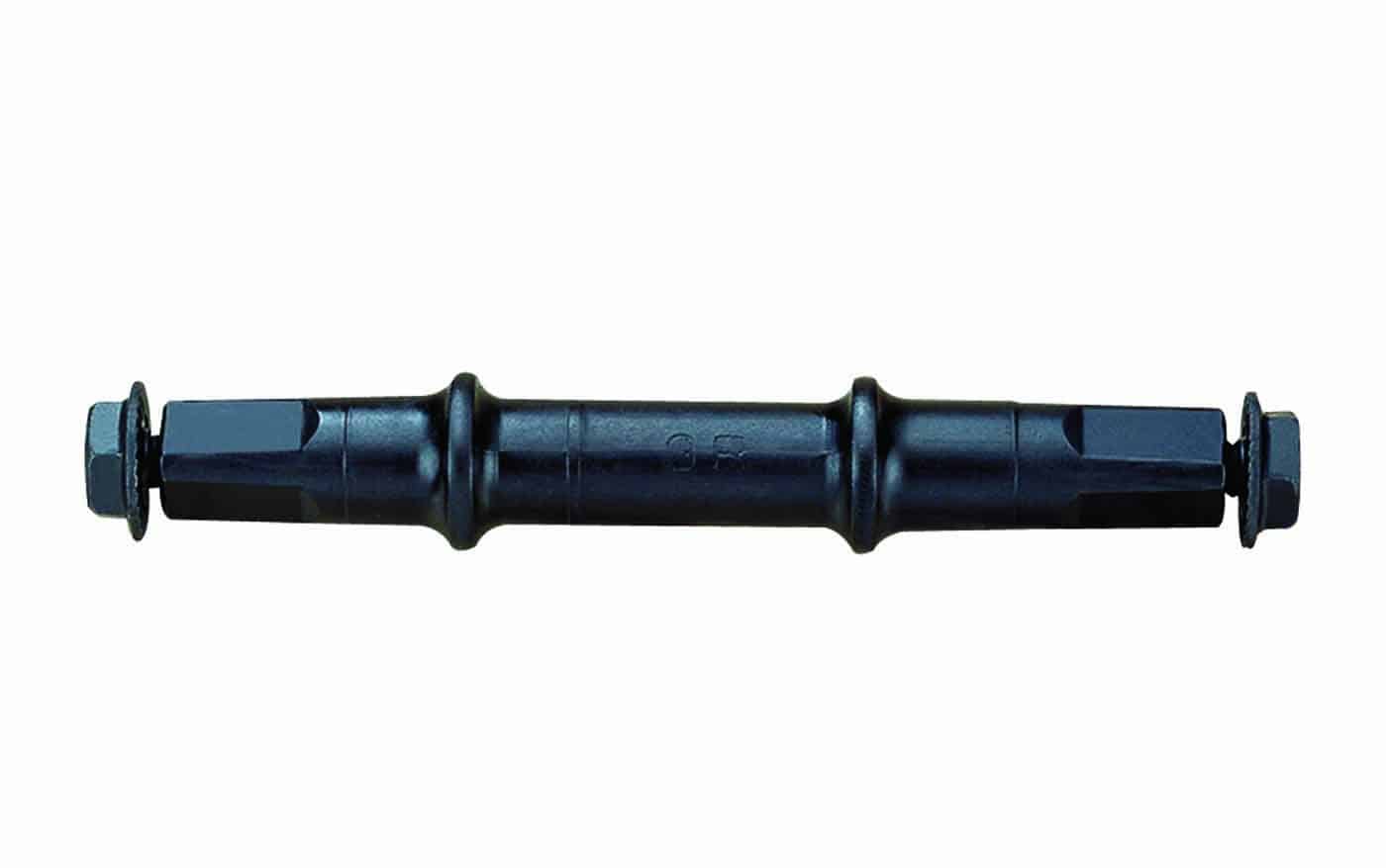
Slide a crank into position on the spindle, then tighten the bolt onto the crank.
Tightening the bolts presses the crank into the taper for a snug fit.
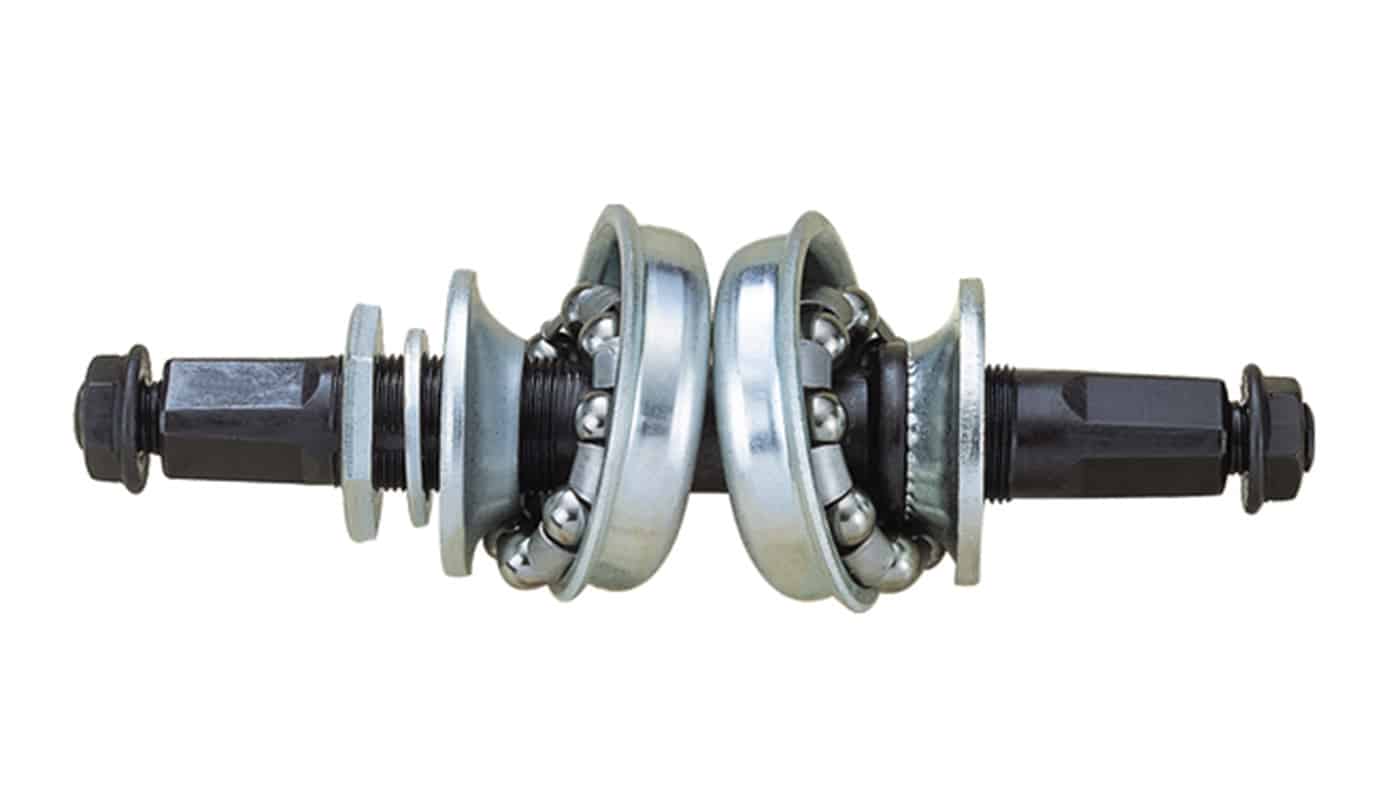
A traditional cup and cone bearing assembly; the bearing balls are mounted into a cage to make them easier to install, remove, and maintain.
You’ll find this spindle setup on cheaper BMX bikes and some entry level bikes that don’t use a cartridge BB incorporating sealed bearings pressed into a body around the spindle.
Tightening a bolt forces the crank further up the taper, into a tighter fit on the taper.
As long as the bolts are tight, they will last forever.
The tricky bit is removing the cranks: you need a crank puller tool to wrest the crank from a tight fit on the spindle.
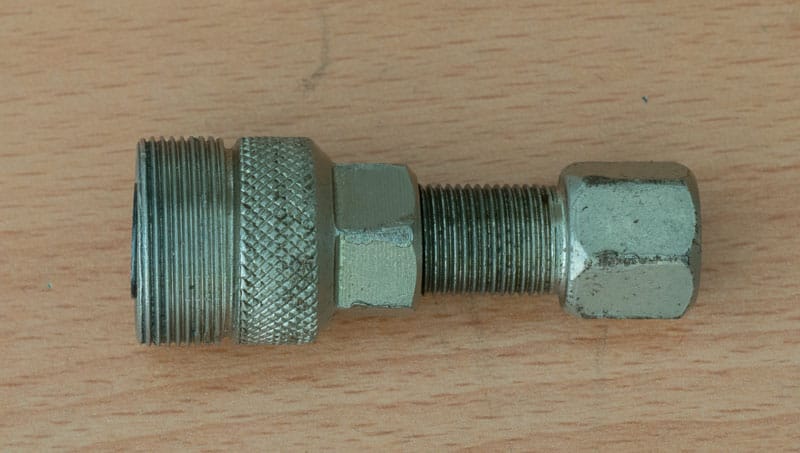
The threads on the large end fit of a crank puller threads inside the crank, anchoring the tool in the crank.
The bolt is fitted with a broad foot which braces against the crank.
Turning the bolt with a wrench increases the pressure of the foot on the crank, slowly pressing the crank away from the spindle.
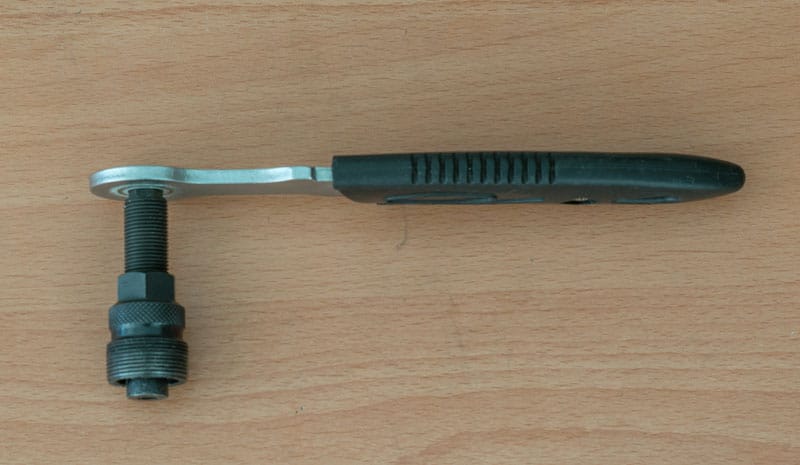
Some tools come with a handle, making them easier to use.
Cartridge bottom bracket
The uptake of sealed bearings in bicycle components is arguably one of the most significant engineering advances to impact bike design.
Sealed bearings are manufactured with precision, particularly the races.
The seals also reduce the penetration of grit and impurities into in the bearings meaning they last longer and roll with lower resistance.
The original cartridge BBs featured tapered spindles; Shimano eliminated the wedge and gave us a splined design.
Shimano Octalink
Shimano’s 8-splined “Octo”link design eliminated the wedge.

This diagram sums up the progression from cottered spindles to splined. (“Clamp-on” refers to cotter pins).
Octalink’s innovation employs a spindle with a greater diameter, 22mm compared to the cotter and square taper spindles’ 16mm.
Eight splines replace the wedges on each end of a square taper spindle.
Slip the crank onto the splines, then tighten the bolts to the correct torque.
The video details the process involved in installing and removing cranks on both square taper and octalink spindles.
“INTEGRATED” CRANK SPINDLES
Splined spindles quickly gave way to integrated cranks, where the spindle is fused to the drive side crank.
The spindle’s outer diameter increases by 2mm to 24mm delivering a lighter and stiffer crank.
The next evolution of bike crank spindles increased the spindle outer diameter from 24mm to 30mm, and then reduced it by 1.01mm to 28.99.
The complication has been with the proliferation of bottom bracket standards making use of a 30mm spindle, a problem that SRAM’s 28.99 standard aimed to overcome.
24mm Spindle
Integrated crank design
- did away with cranks independent of the spindle
- introduced the external bottom bracket
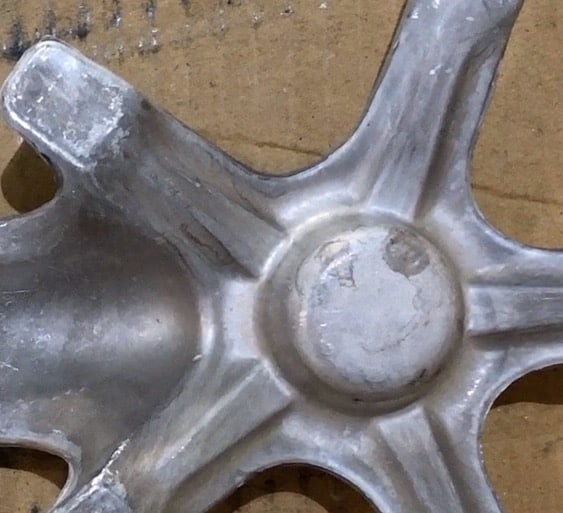
In mid-end integrated cranks, crank spider and spindle are manufactured separately.
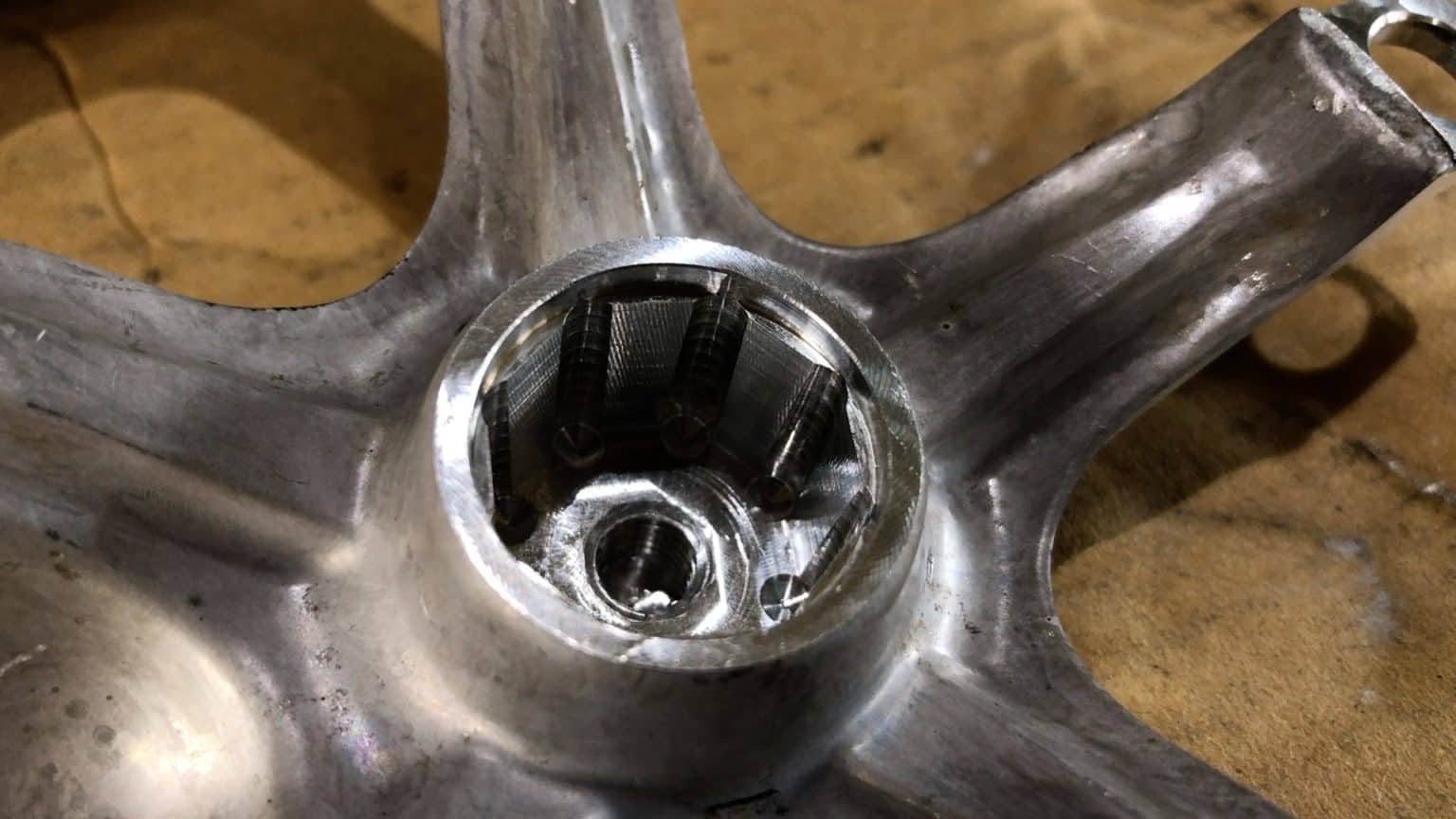
Splines are machined in the base where the spindle will be anchored.
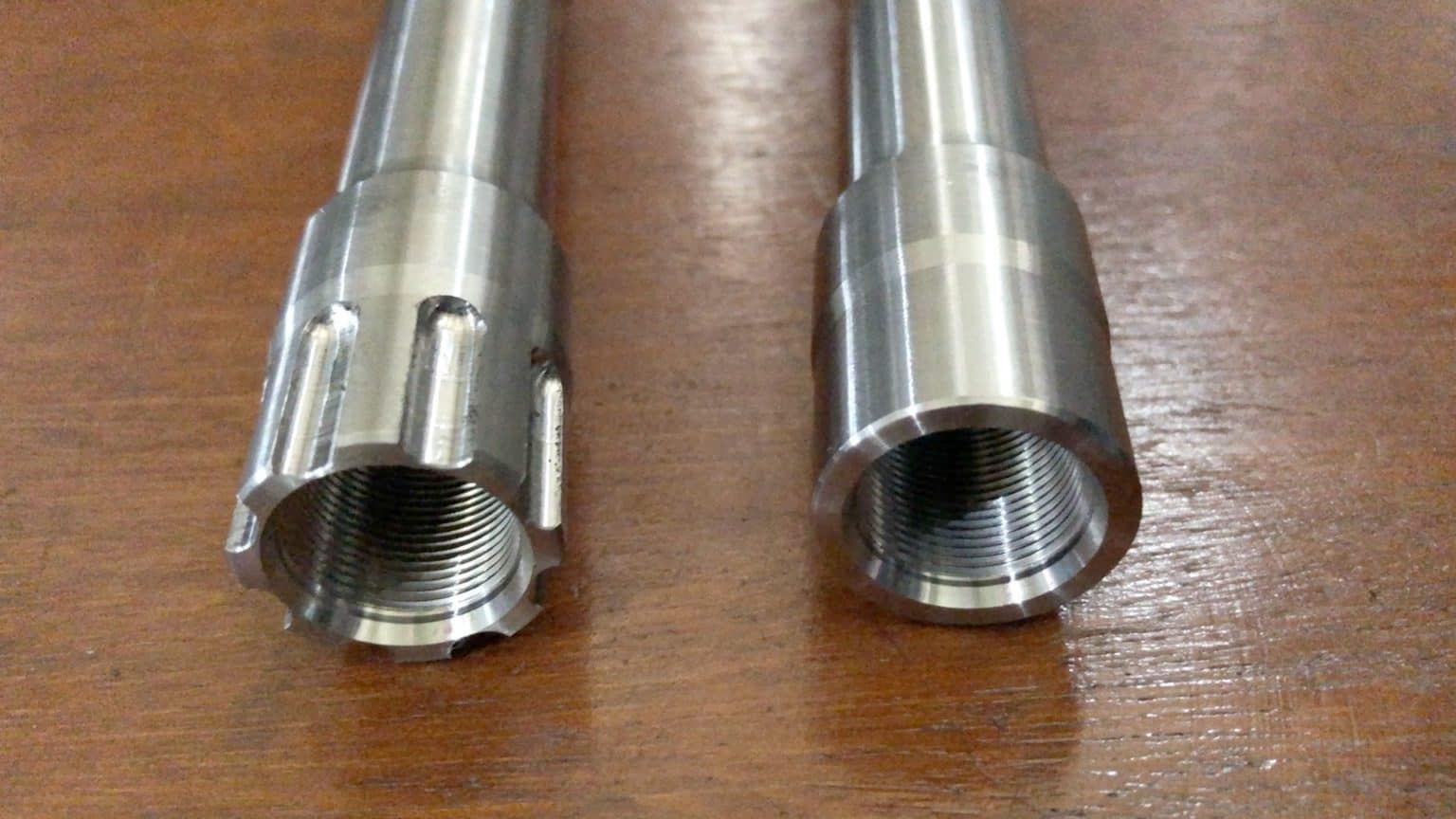
The splined spindle starts out smooth but cutting splines into is each component is superior to fitting a smooth spindle face to a smooth spider,
The spindle is later solidly fused into the spider; but the strength, of course, comes from the interlocking splines.
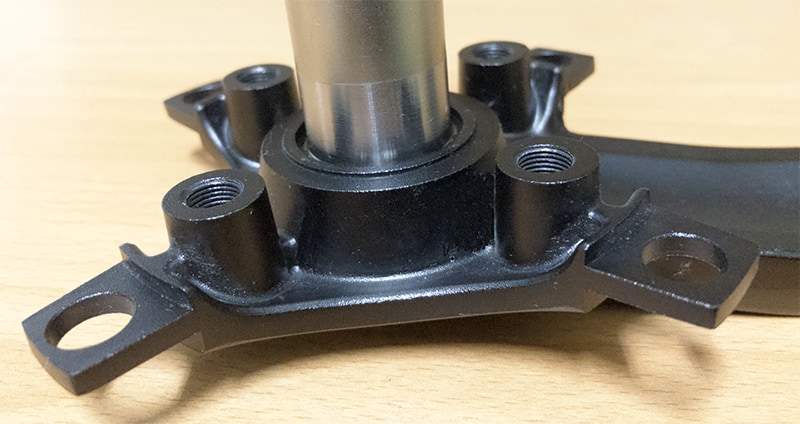
The finished version looks like this.
Mount the chain rings into position, and you have an integrated crank ready to install.
30mm Spindle
Increasing the spindle outer diameter from 24mm to 30mm created a lighter and stiffer crank.
It also brought the bearings back inside the frame in new press fit bottom bracket configurations which has made what was a simple system overly complicated.
One problem has been that high end brands introduced proprietary BB designs, each with their own interpretation of press fit.
The more popular press fit solution is the PF30 standard.
BB30
Cannondale’s original BB30 innovation had minimalism in mind: a 30mm diameter integrated crank installed into sealed bearings mounted, in turn, directly into the BB shell.
The idea has been adopted by a few of the bigger brands into proprietary configurations.
But while the 30mm spindle has been welcomed, the technique of seating sealed bearings directly in the BB shell has not.
The answer was to enlarge BB30’s 42mm BB shell to 46mm, then install the sealed bearings in cups which are then installed into the shell.
PF30
Installing BB30’s sealed bearings into the shell requires precision execution with precision tools.
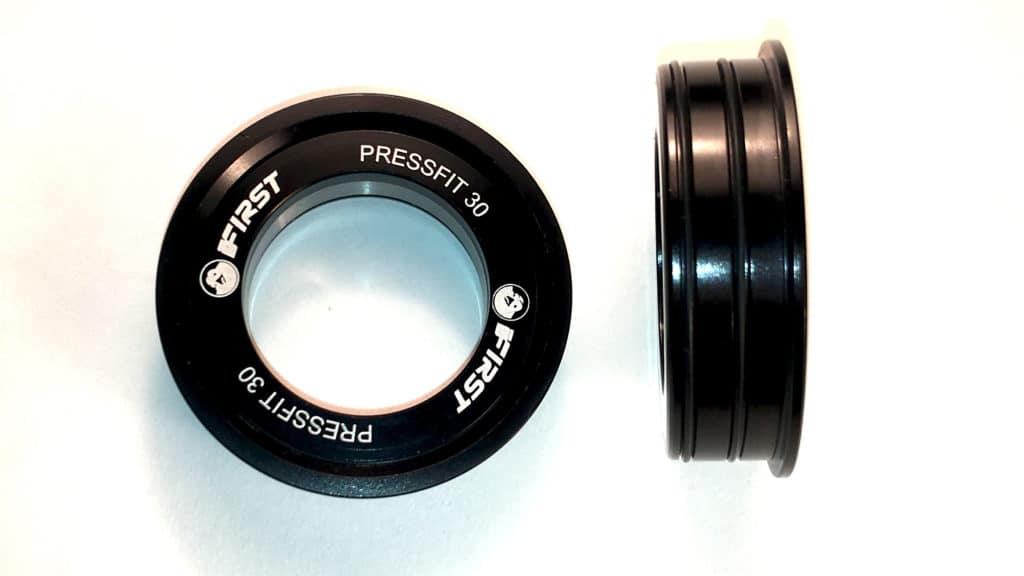
Even if the install is perfect, unless the tolerances of the manufactured components are tightly constrained, components often move excessively as force is applied to the pedals and the frame flexes.
The main variable is the fit of the sealed bearings into the shell which depends on the manufacturing tolerances of the shell and the sealed bearing.
Variances of a few hundredths of a millimeter on a sealed bearing’s outer diameter coupled with similar variance in the BB shell’s ID can be the difference between a BB that creaks, and one that doesn’t
Now, although PF30 places the sealed bearing inside a cup, the problem of variable tolerances remains.

Bottom bracket shells are manufactured by factories specializing in bike tube production.
These units are very slightly elliptical or irregular—they are not perfectly circular in purely geometric terms.
And neither are PF30 bearing cups.
Or even if you start off with a BB shell that is as close to perfectly circular as possible, frame heat treatment processes can deform it.
In reality such imperfections only matter if you can’t turn the spindle.
In practice an efficient, quiet drive train is what all cyclists prefer. But PF30 has not delivered that to the satisfaction of many.
28.99mm – Durable Unified Bottom Bracket (DUB)
If SRAM hadn’t moved to counter the continuing fragmentation of press fit standards into proprietary designs, somebody else would have.
In 2018 SRAM introduced a single crank spindle size to fit any of the main bottom bracket shell/bottom bracket specifications (apart from some proprietary standards).
28.99 is practically, effectively, 30mm.
Cyclists enjoy the stiffness of a 30mm spindle whilst eliminating the problem of incompatibility across bottom bracket and crank models.
SRAM argues that the 1.01mm difference results in the optimal diameter given the number of variables involved in the design of the bottom bracket—they didn’t aim for 28.99mm in particular (although some skeptical commentators argue that the 28.99mm spindle is purely a marketing ploy).
Balancing ball bearing size, ball quality, the thickness of the inner race and outer, along with other elements . . . it just turns out that 28.99 is the best, so the argument goes.
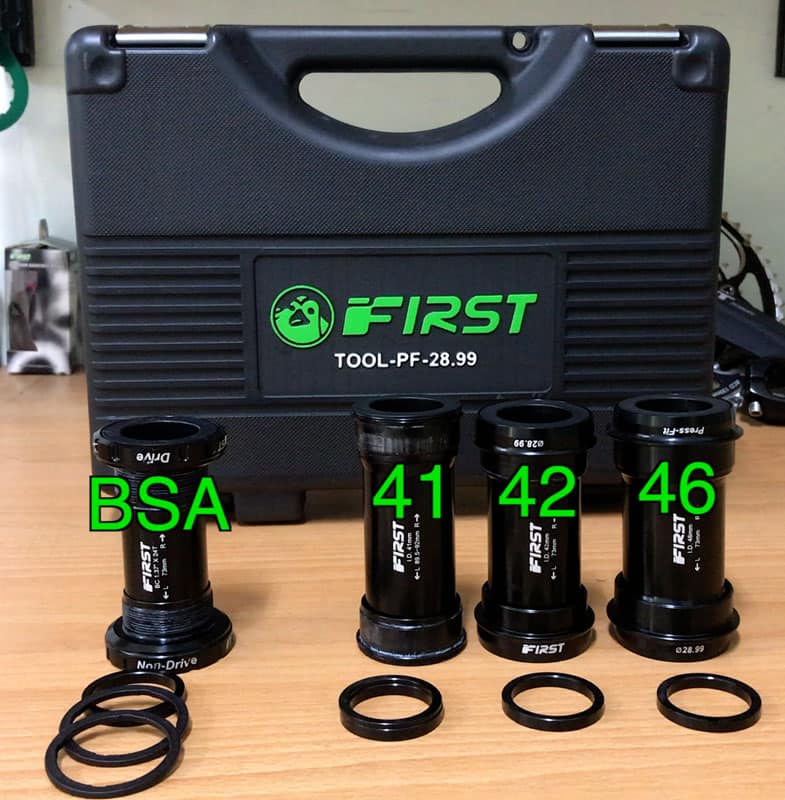
Any bike with one of the main bottom bracket designs — threaded (BSA), 41, 42, or 46mm — can be fitted with a substitute BB that has the 28.99 internal diameter required to accept the DUB crank’s 28.99mm spindle.
FINAL COMMENTS—E-Bikes Set to Simplify Everything
When discussing bike spindles, it’s easy to get stuck on bottom brackets which hog the limelight even though they are the not the star of the show.
A bottom bracket is a supporting component that enables a spindle to spin. An efficiently spinning spindle is the reason a bottom bracket exists.
Cyclists looking to minimize spindle flex opt for a 30mm (crank) spindle; 24mm if flex (and a little extra weight) is not a problem.
One consequence of the e-bike revolution has been to move the bike industry back to simplified bottom brackets.
Hub drive e-bikes normally install square taper cartridges, with some variation of these in mid-drive motor models.
Spindles have truly become drive shafts in this case as e-bikes continually evolve into a sub-category of Electric Vehicle rather than bicycles per se.

1 thought on “Bike Spindle Design and Manufacturing (Past to Present)”
FSA designed 386EVO long before SRAM came out with DUB. IMO, 386EVO is the best “universal” standard IMO and works in MANY bottom bracket shells.